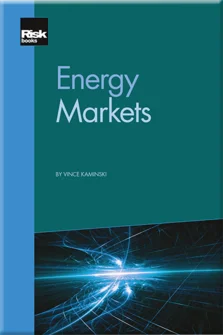Electricity: The Basics
Electricity: The Basics
Energy Markets: Introduction
Energy Trading and Marketing: The Macro View
Energy Trading: The Organisation
Weather Information in Energy Trading
Energy Markets: The Instruments
Energy Markets: Structured Transactions
Energy Markets: Exchanges
Energy Markets: Market Participants and Regulatory Developments
Natural Gas: Upstream
Non-conventional Natural Gas
Natural Gas Transportation and Storage
US Natural Gas Markets
International Natural Gas Markets
Oil Markets: Properties, Production and Reserves
Non-Conventional Oil
Oil Processing
Oil Transportation and Storage
Oil Pricing
Transactions in the Oil Markets
Electricity: The Basics
Power Generation
Transmission, Loads and Power Pools
Analytical Tools
Electricity Markets Transactions
Manipulation and Gaming of Energy Markets
Emission Markets
Coal Markets
Conclusions
Each section of this book has started with a discussion of the physical properties of different energy commodities. However, this task is especially difficult for electricity. We cannot see it, we cannot smell it, we cannot touch it – and appeals to our sensory experience break down when we try to describe its movement. We can, of course, touch a conduit transmitting electricity, but this is not a recommended way to study the market. At the same time, it is difficult to think of any energy commodity for which an understanding of the technical aspects of production and transportation is more important in order to avoid nasty market surprises and bad deals. The challenge of explaining certain physical facts related to electricity is that it can be based either on a “trust me, this is the way it is” approach or would require a long dissertation involving complex mathematics. Complex means, in this context, both complicated and making use of complex numbers – ie, numbers containing real and imaginary parts. We have tried to choose a middle road and elaborate on some technicalities. Those who find the
Copyright Infopro Digital Limited. All rights reserved.
As outlined in our terms and conditions, https://www.infopro-digital.com/terms-and-conditions/subscriptions/ (point 2.4), printing is limited to a single copy.
If you would like to purchase additional rights please email info@risk.net
Copyright Infopro Digital Limited. All rights reserved.
You may share this content using our article tools. As outlined in our terms and conditions, https://www.infopro-digital.com/terms-and-conditions/subscriptions/ (clause 2.4), an Authorised User may only make one copy of the materials for their own personal use. You must also comply with the restrictions in clause 2.5.
If you would like to purchase additional rights please email info@risk.net











